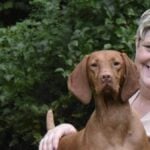
Home » The Unique Lakeland Terrier – Head, Ears & Expression
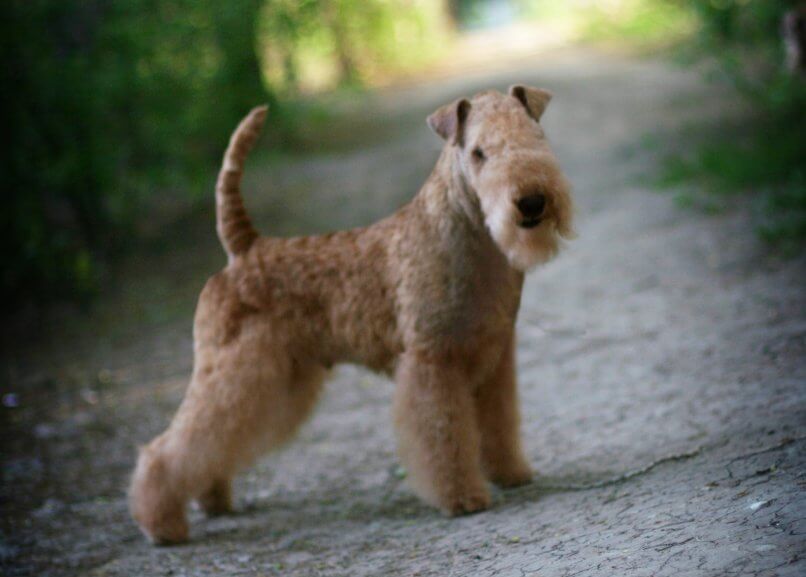
The Unique Lakeland Terrier – Head, Ears and Expression
By Pat Rock
Everyone has heard the old saw that if you viewed dogs with just their heads hanging over a fence you should be able to recognize each breed, even if you couldn’t see the color or markings. Nothing could be more true about the long-legged Terrier breeds.
Face it, given how low entries are in Lakeland Terriers, and how rare the opportunities are for attendance at breed-specific seminars or ringside mentoring, precious few newly approved judges have had the opportunity to get up close and personal with more than a handful of Lakelands. Studying profile pictures and a few heavily campaigned specials can’t provide the comparisons for this breed that may be obtained by attending a single (for example) specialty for Golden Retrievers.
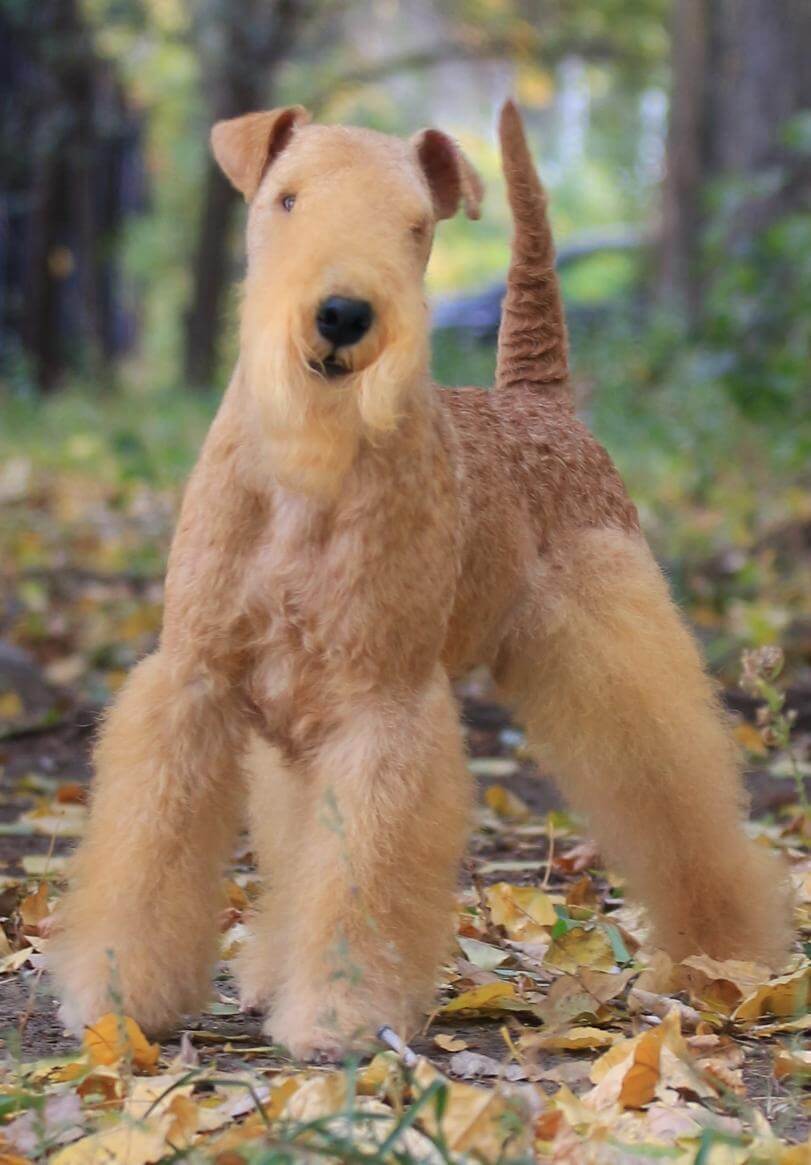
The Lakeland Terrier headpiece is unique. Of course, not every Lakeland Terrier shown or finished will possess the ideal head, ears, and expression. There is the whole dog to consider. Achieving a Lakeland that approaches the ideal does not occur merely by “breeding the best to the best.”
The earth-working Terriers definitely illustrate the principle of “form follows function.” You must breed an animal with big jaws, small size, maximum substance, maximum flexibility—can you visualize the difficulty of achieving these opposing characteristics? These are not characteristics that can be fixed in a gene pool, but must be perpetually selected for.
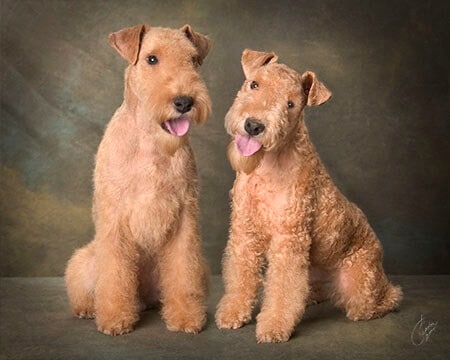
A short back (meaning short loin, good length of ribcage), besides being aesthetically pleasing, is another form-follows-function trait—stamina. A long, reachy neck, arched well into head, does not naturally accompany a short back and must always be selected for in every generation.
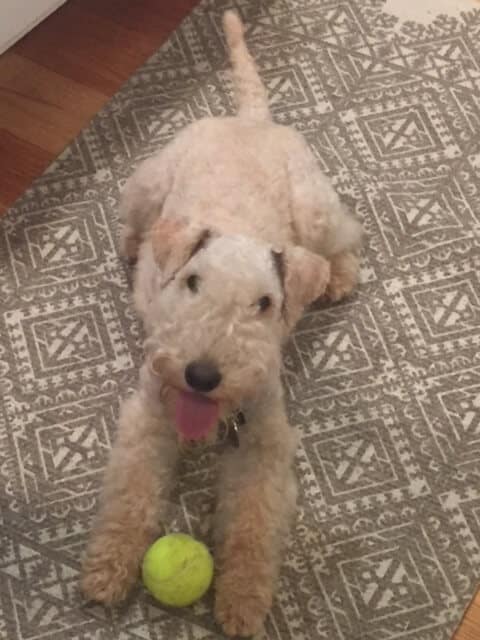
Form-follows-function: flexibility underground. Flexibility in the shoulder assembly is paramount, both for jumping (underground ledges in the lair of the fox) and navigating narrow spaces. The Terrier that can get a throat-hold takes much less punishment from the fox than biting at the head.
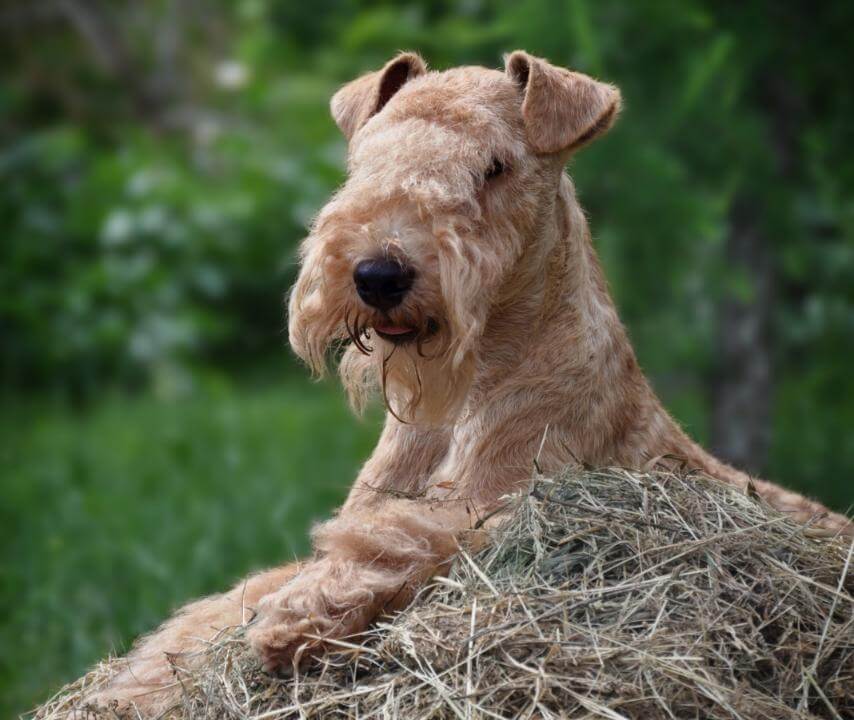
It is possible to study side-on pictures and side gait to get a fair idea of these aspects of conformation. If you really want to understand Lakeland breed type, though, you must spend time looking at them face-on. The number one characteristic: a big nose. A large nose indicates large teeth and jaws. You want maximum biting power, but they don’t have an opportunity to bite the quarry if their skull is too big to fit in the fox’s den. Therefore, the correct Lakeland skull will have flat cheeks, and the skull is about as long as the muzzle. The muzzle should never exceed the length of the backskull. Muscles obey the laws of physics; the farther they are stretched between origin and insertion the weaker their power will be unless they are bulked up, which in this case defeats the purpose of getting into tight spaces.
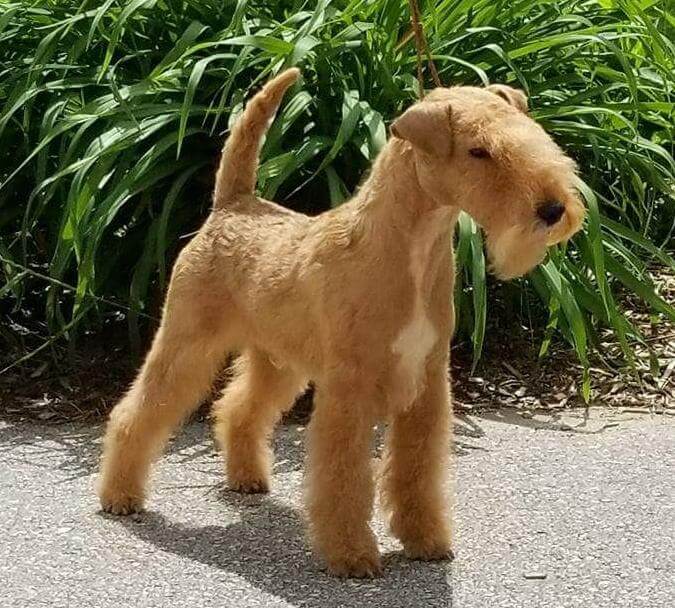
The backskull should be square; width the same as length from stop to occiput. Skull should be flat ontop, with good fill for attachment of muscles. Properly placed ears accentuate the powerful headpiece. They should be triangular, fold just above the level of the skull, the inner edge held close to the skull, with the tip not extending below the corner of the eye. As long as the ear canal is typically covered, ear size and placement will serve the working Terrier just as well if there is even some variation.
The combination of eyes that look straight ahead and are less “varminty” than some other Terrier breeds, set in the strong headpiece with flat skull and big nose, and those correctly placed (and mobile) ears make the unique and endearing face of a Lakeland.
